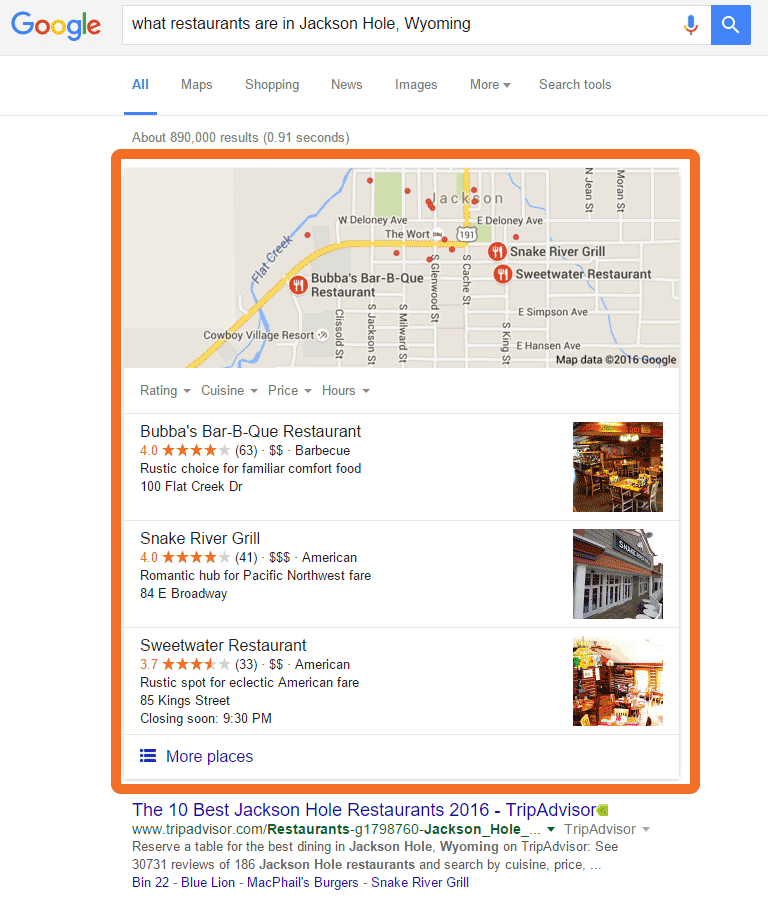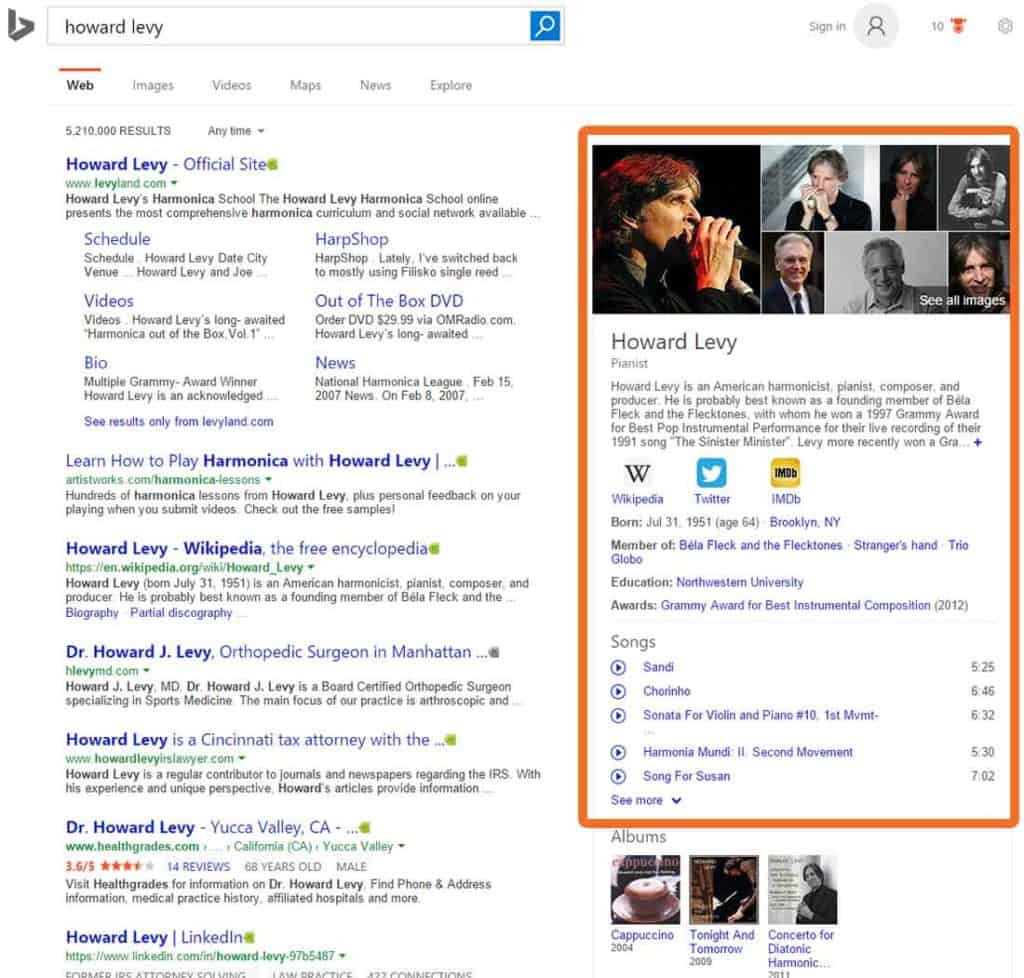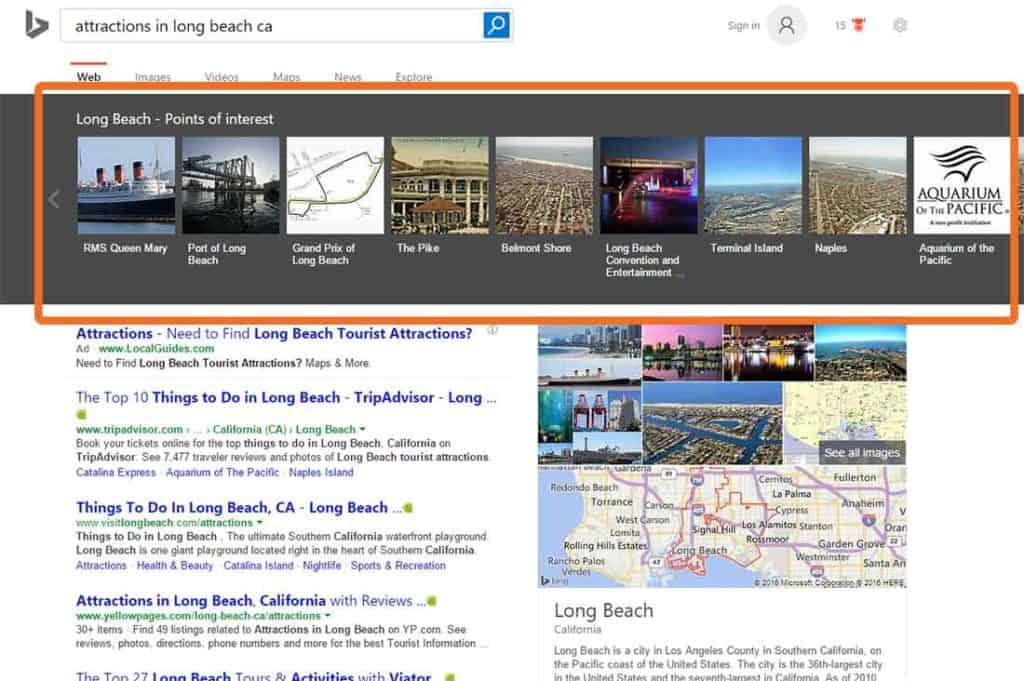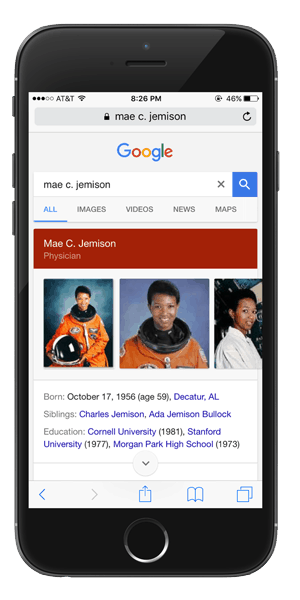Yesterday’s search was plain vanilla.

Today’s search is set up for Semantic SEO.
Browser and search engine technology has moved well beyond those simple blue links. Today, search results are aesthetically richer and provide much more information about the people, places, and things that users search for.
Rich displays show off information such as company logos, maps and directions, ratings and reviews, photos, icons, video, audio, social media profiles, tables showing relevant information, and links to related content. In SERP (Search Engine Result Page), these items may appear as follows…
in information boxes at the top of the left-hand panel

inline within organic search results

in a rich display panel on the right of the screen

in a carousel display at the top of a screen

Will my company look like these?
The honest answer is… Maybe. Search engines are constantly experimenting and trying new displays, but no matter what the display looks like, the data we provide through Semantic SEO will feed into these systems. Many factors go into how and when a particular result is displayed, but we have had great results getting our clients into these types of displays and controlling what data gets shown.
What about mobile devices?
People search for things in the web in vastly different ways than we used to. We ask specific questions rather than trying to guess at the best combination of keywords; we search on various devices; we use keyboards, mice, touch-screens, voice, and other input modes. We may be more likely to say “Hey Siri…” “Okay Google…” “Hi Cortana…” “Yo Alexa…” etc. to find the information we’re looking for than we are to type.
Rich displays appear on mobile, too!

Using Semantic SEO technologies, you only have to publish your data once, and these systems can all consume it. In other words, when a user asks a question, no matter how or where they ask it, with semantic SEO, you’re set up to be found.
Each system may display the answers in a very different way, but by standardizing the data that your website sends to these systems, you can ensure that whenever your business is rendered, that is done in the very best possible way.


